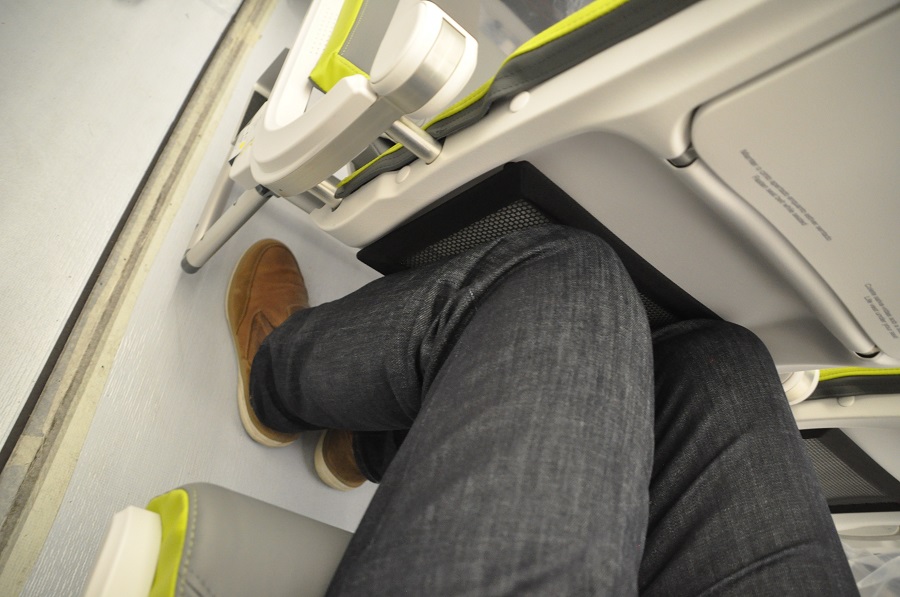Guard your knees — the US Federal Aviation Administration will not be changing the rules on economy legroom after rejecting claims that cramped conditions and bigger passengers pose a safety risk.
The FAA also indicated it does not have a problem with seat pitches — the distance between seats — as low as 27 inches, although it doubted airlines could sell a configuration that tight. The lowest seat pitch currently is about 28 inches but many legacy carriers offer 31 to 32 inches.
In a decision that will be welcomed by airlines, the FAA told advocacy group Flyers Rights in a letter that it has no evidence that there is an immediate safety issue requiring a change to existing rules.
The US regulator said nothing in letters or submissions from the consumer organization “demonstrates that current seat dimensions (width and pitch) hamper the speed of passenger evacuation, or that increasing passenger size creates an evacuation issue.”
“The reason that seat width and pitch, even in combination with increasing passenger size, do not hamper the speed of an evacuation is the timeline and sequence of evacuation,’’ the FAA said.
“The time it takes passengers to get out of their seats, even if those seats are relatively narrow and close together, is less than the time it takes for the emergency exits to begin functioning and for the line that begins forming in the aisle to clear.”
The FAA was forced to revisit the issue after a federal court judge last year ordered it to address concerns about what she described as “the incredibly shrinking airline seat”.
READ: Seat crunch court ruling could affect the way we fly.
“As many have no doubt noticed, aircraft seats and the spacing between them have been getting smaller and smaller, while American passengers have been growing in size,” Judge Patricia Millett said.
The court ruling came after Flyers Rights petitioned the FAA in 2015 to regulate seat space.
The agency refused so Flyers Rights took legal action, arguing that narrower seats and closer spacing were “endangering the safety, health and comfort of airline passengers.”
In her ruling, Willet expressed doubts about an FAA assertion that seat spacing did not affect the safety or speed of passenger evacuations.
“To support that conclusion, the Administration pointed to (at best) off-point studies and undisclosed tests using unknown parameters,” she said.
The FAA, which has made available videos of evacuation tests for public review, said it had no evidence that a typical passenger, even a larger one, would take more than a couple of seconds to get out of his or her seat.
It noted that although some airlines had operated with a seat pitch of less than 30 inches for decades, pitches below 30 inches “are still not common today”.
Seat pitch was also unlikely to go below 27 inches under current technology and regulations, it said.
Regulations require that seats did not deform in a crash to a point where they impede egress and the FAA said this effectively resulted in a minimum of nine inches between the front of the seat cushion to the nearest point on the back of the seat in front.
It said seat bottoms were typically 18 inches front-to-back and had been for many years. This meant the pitch of a compliant seat was unlikely to go below 27 inches “even if a carrier could persuade passengers to purchase tickets for flights with seat pitches that low”.
The FAA’s decision comes after airline chiefs attending the International Air Transport Association annual meeting in Sydney last month warned against any move to regulate the amount of leg room provided to economy passengers.
READ Airline chiefs warn against legroom regulation
























